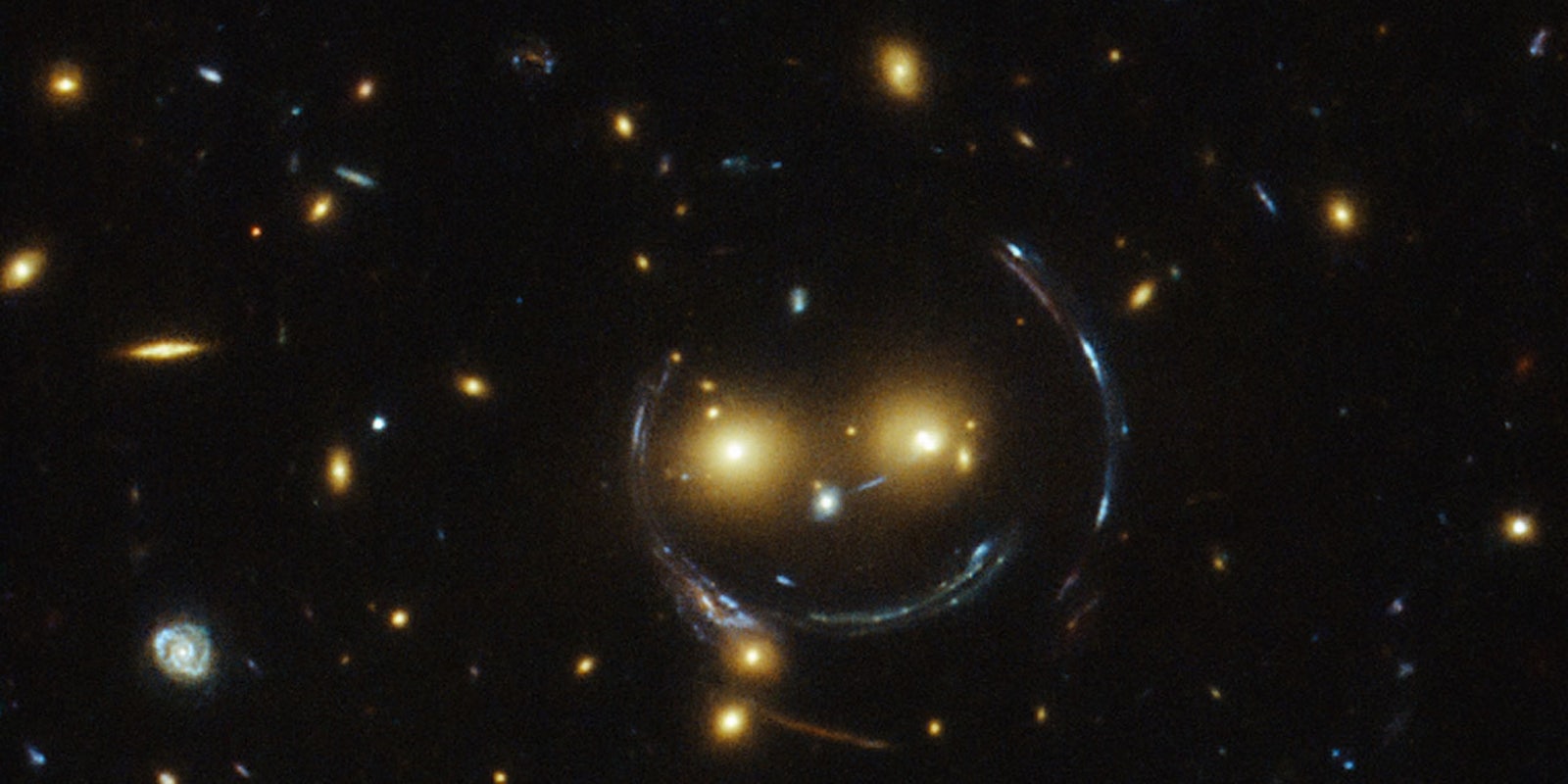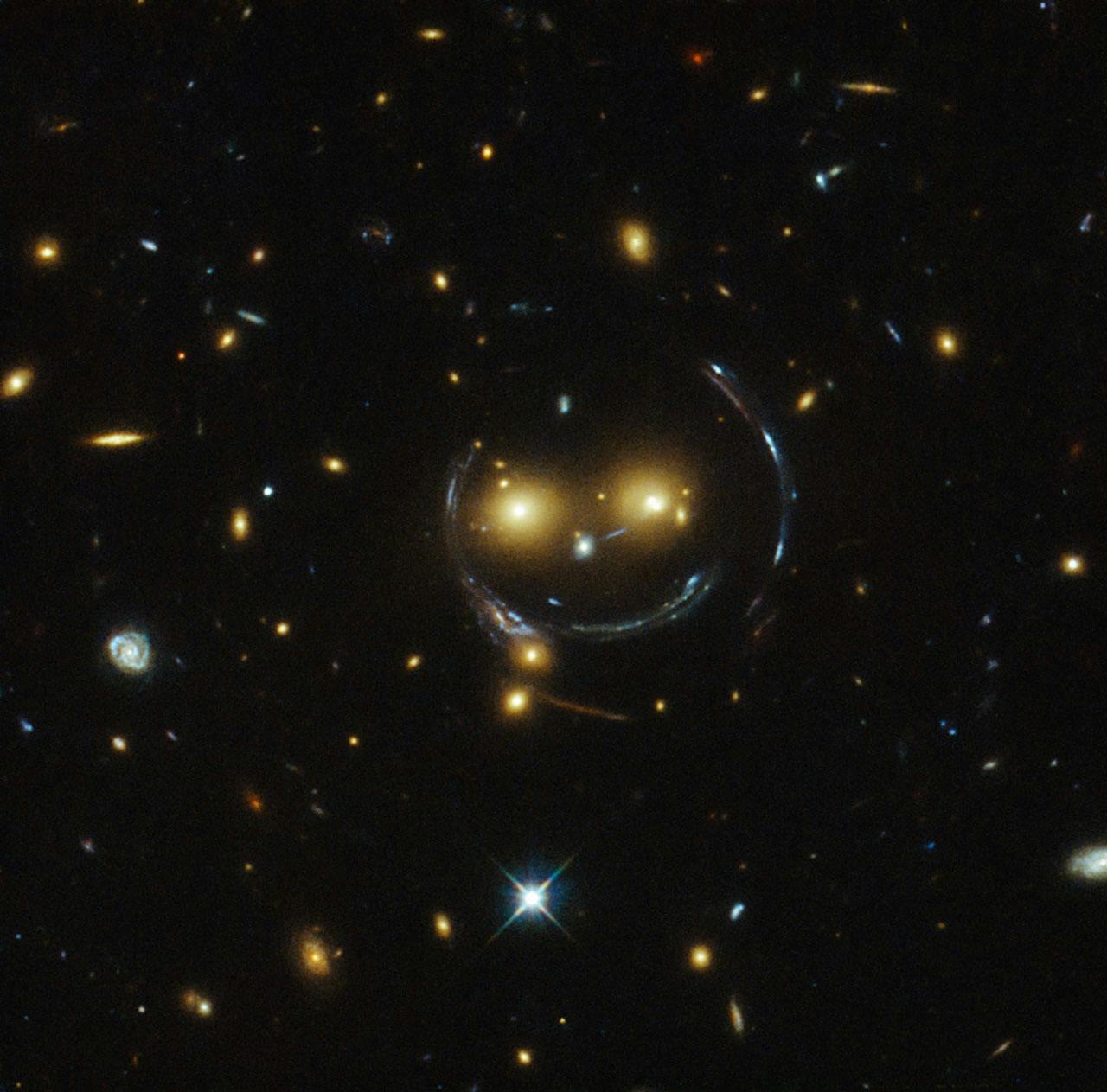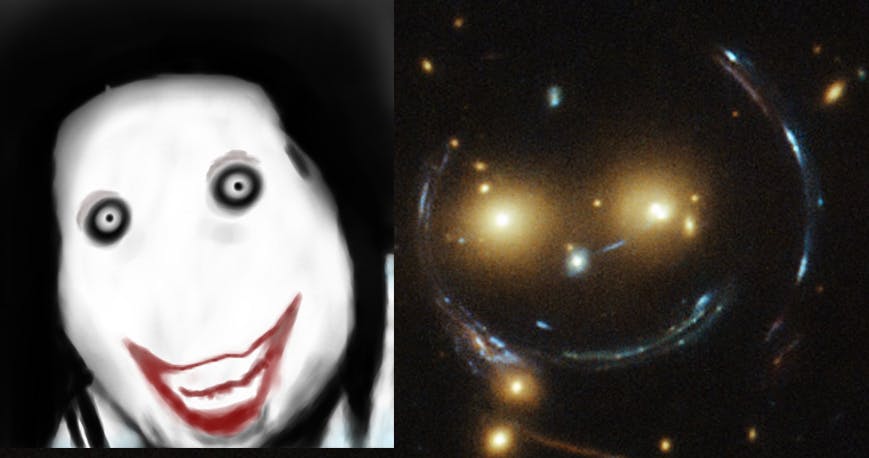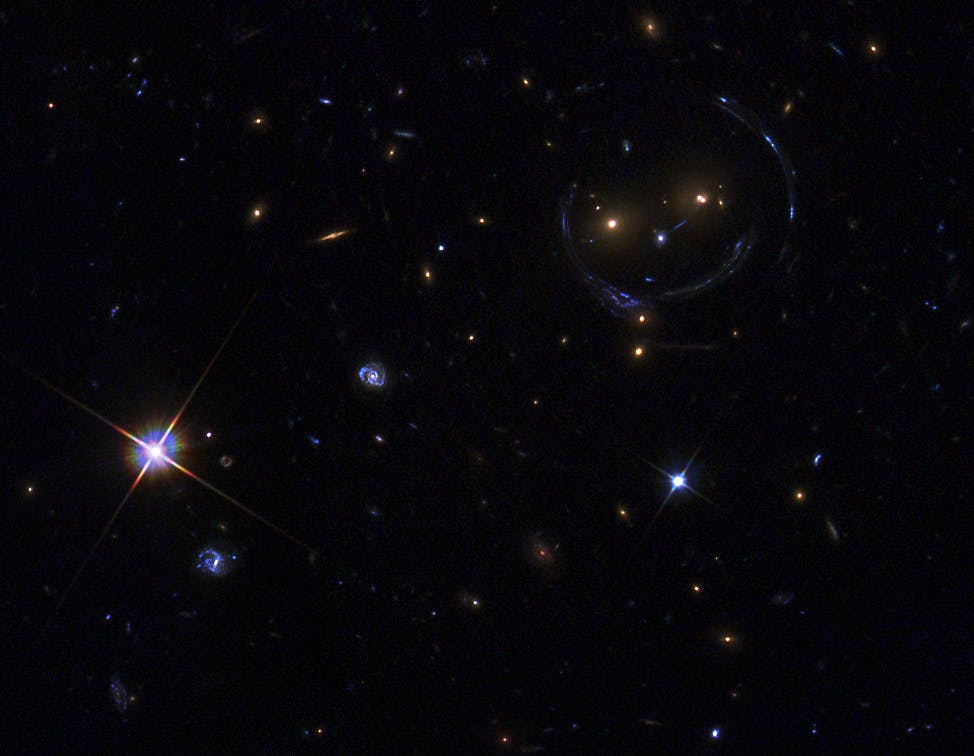NASA‘s Hubble Space Telescope may be a whopping 25 years old, but it’s still delivering service with a smile.
The high-powered telescope that’s continually sent us incredible pictures of the universe has delivered a friendly greeting from the nether reaches of the solar system. The photo, shared yesterday by the Hubble website, shows a galaxy cluster called SDSS J1038+4849 among its stellar neighbors. As you can see, it looks happy to see us:
Now, we’re not saying this photo is physical proof of Jeff the Killer in our universe, and we’re not saying it isn’t, but we aren’t closing our eyes any time soon.
Although you may think this effect is a trick of photo enhancement, what you’re actually seeing is the warping of time and space as we know it. Seriously. This effect is called strong gravitational lensing, which is when the mass of an extraordinarily dense object, like a black hole or this galaxy cluster, exerts such a huge gravitational pull on light that it takes on the role of a “cosmic lens,” bending and refracting the light around it.
Had this particular arc been more complete, it would fall into the category of an Einstein ring, named after the guy who first predicted, as part of the theory of general relativity, that light could be bent by giant dense objects in space. (Good call there, bro.) It was Hubble, too, which photographed the very first observed Einstein ring in space, way back in 1998.
Though the photo was just posted Monday, an earlier version of it was shared on Flicker in 2012 by a woman named Judy Schmidt as part of the site’s Hubble Hidden Treasures collection:
We have to admit this version is a bit softer and more soothing.
Still, we know you’re out there, Jeff. Hubble will be watching.
Photo via Hubble Space Telescope





